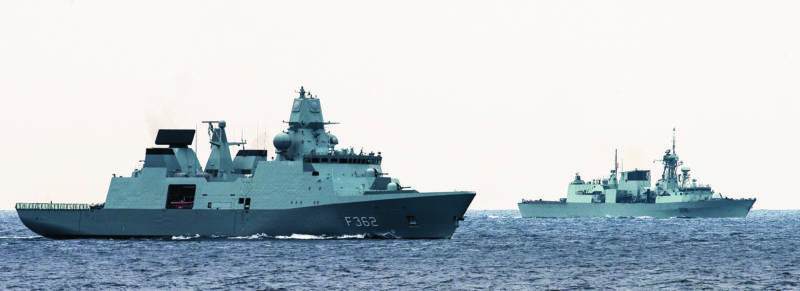Robert Smol holds a Master of Arts in War Studies from the Royal Military College of Canada and served in the Canadian Armed Forces for 20 years, retiring as a Captain in the Intelligence Branch.
In recent months, the Danish government has been considering establishing a Canadian Ranger-style volunteer militia among its Inuit.
As prudent as this is, there will inevitably be those on this side of the Hans Island dispute who will interpret a Greenlandic version of the Canadian Rangers as proof that Canada is a leader and inspiration when it comes to Arctic sovereignty.

So let's take some time and review the Danish military presence in Greenland where the Canadian Ranger-style force has been proposed as only the latest complementary tool in an extensive professional military toolbox employing technology and capability far exceeding Canada's efforts on land, sea and air.
Whereas Denmark views its proposed Ranger-style militia as a latent attempt to "help close its Arctic capability gap" Canada consistently views its non-combat ballcap and hooded Rangers as the bulwark of Arctic sovereignty defensive posture. Secure in our naïve belief that the American administration and Congress will now and forever expend all resources needed to defend Canada, at no apparent cost to Canadians, there seems little beyond our auxiliary, non-combat capable Rangers to keep Canada secure in the Arctic.
An administrative headquarters, a non-combat squadron of Otter aircraft, a small communication station on Ellesmere Island (CFS Alert) and an army reserve detachment in Yellowknife make up Canada's actual military presence in the Arctic.
While also closely allied to the U.S and its military, the Danes have assumed a far more mature and self-respecting stance on the defence of their Arctic territory. In Greenland, the Danish Forces maintain regular consistent sovereignty patrol presence mainly through an elite professional military unit called Siriuspatruljen (Sirius).
This unit consists of members of the Danish professional military who undergo a rigorous seven-month training program aimed at teaching them how to operate in small teams usually by dog sled. Training for Sirius typically lasts seven months and includes a range of specialties from shooting, to reconnaissance, to advanced first aid, to sewing, all skills needed to patrol and survive, for extensive periods, in extreme Arctic conditions. Those who make it through the rigorous selection process can expect to be deployed in Greenland on sovereignty patrols for two years.
Nothing remotely equivalent to Sirius exists in Canada. Our Rangers have an optional training course lasting 10 days.
But land operations serve as only part of the total defence, as then-head of the Royal Canadian Navy Admiral Mark Norman stated to Parliament in 2014 the Arctic is a "fundamentally maritime operating environment." Yet whenever Canada manages to complete its perennially delayed Arctic Patrol vessel programme our ships will never be a match weapon-wise to Denmark's recently completed Arctic Patrol ships.
That is because Canada's Arctic ships will only carry a single machine gun and their role will be "constabulary" as opposed to combat military.
Compare this to Denmark's Knud Rasmussen class of patrol ships, which went into operation between 2008 and 2017. These ships carry an OTO Melara 76 mm main gun as well as two smaller 12.7 mm machine guns. The Danish Arctic ships also carry MU90 ASW torpedoes and can be fitted, if necessary, to carry RIM-162 Sea Sparrow surface to air missiles. And Denmark's three Arctic Patrol ships are only part of a modern naval building program that also included three Air Defence Frigates, two Combat Support Ships, and six smaller coastal patrol vessels all launched over the last 15 years.
Canada, meanwhile, plans to replace our sole fleet 25 to 30 year old Halifax frigates hopefully by – are you ready – 2040!
And what can I say about the Royal Canadian Air Force other than the fact that, while Canada purchases old, used F-18 fighter aircraft from Australia, Denmark is in the process of acquiring 27 new F-35 fighter jets, the same jet Canada still can't decide if and when it will ever purchase.
And with all the above capabilities in place, the Danes are also thinking of adding a Canadian-style Ranger force to complement its modern, professional military.
So, when it comes to total defence of it's Arctic territory, should tiny, social-democratic Denmark look up or down on on Canada? You decide.